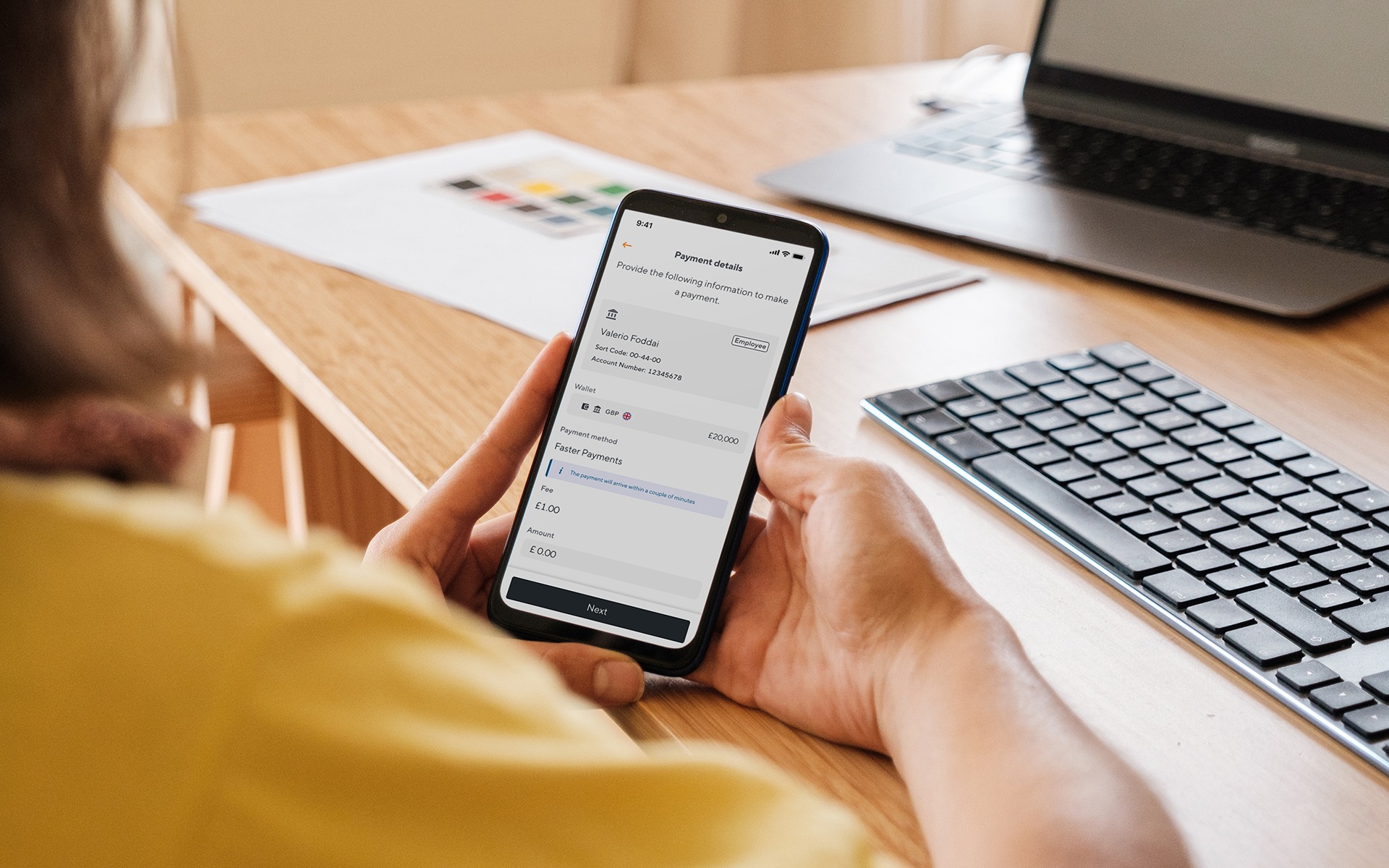Productive Remote Teams Demand Freedom: An Interview with Carl Frey
An interview with Carl Benedikt Frey, Future of Work Expert and Oxford Martin Citi Fellow at the Uni of Oxford
Remote working is no longer a nice-to-have: it’s a part of modern business strategy and culture. But it’s a double-edged sword. Get it right and you’ll improve productivity; get it wrong and employee engagement and efficiency break down. Which is why, at Soldo, we want to provide you with more than just a toolkit for remote-workers. In this series, prepaid card provider, Soldo is working with leading academics and business experts to give you the bigger picture on remote working: from management to wellbeing, finance to HR.
Carl completed his PhD at the Max Planck Institute for Innovation and Competition in 2011, then joining the Oxford Martin School where he founded the programme on the Future of Work. In 2019, he joined the World Economic Forum’s Global Future Council on the New Economic Agenda, as well as the Bretton Woods Committee. He has served as an advisor and consultant to international organisations, think tanks, government and business, including the G20, the OECD, the European Commission, the United Nations, and several Fortune 500 companies. He is also an op-ed contributor to the Financial Times, Scientific American, and the Wall Street Journal, where he has written on the economics of artificial intelligence, the history of technology, and the future of work. His most recent book, The Technology Trap, was selected a Financial Times Best Books of the Year in 2019.
You’re an economist, so productivity is high on your agenda. What rules should a business put in place when launching a remote working regime, to maintain productivity?
It’s certainly important for employees working remotely to have routines and discipline. But I think the wonderful thing about working remotely, which hugely influences productivity, is that you can take that break when you feel you really need it. You can divide your day into slots which can be adjusted from day to day, depending on when and how you feel most productive. And the opposite is true: when you get stuck, you can take a break or go for a walk and start over again.
It means that there’s no clear beginning or end to the day, and that can be challenging both for employees and managers, but I think teams are dramatically more productive with the freedom to take breaks when it suits them. Obviously, if you run a business, you will be thinking about deadlines and fixed meetings, and the extent you need those catch-up meetings will depend on the size of the team and the nature of the organization. But instead of worrying, I’m convinced that managers are best off giving remote workers the freedom to operate their way – the productivity will follow.
A Chinese company conducted an experiment whereby they assigned people to either work from home, or from the office – and the allocation was entirely random. They found that people working from home were much more productive. They took shorter breaks but also found the work less stressful. So there’s good evidence that employees who remote-work benefit enormously in terms of their own wellbeing, yet also increase productivity for their companies.
That’s not to say the benefits are universal, or automatic. Another study conducted in Oxford found significant differences in productivity between men and women. Apparently, men working from home were more productive. The study team therefore sent out a follow-up survey which revealed that women working from home were often also taking care of children. So it’s essential that managers enact systems which take account of the full breadth of the remote working environment – if you’re expecting people to work remotely, you must give due consideration to your employees’ lifestyles.
Technologies like telepresence and tele-robotics that really substitute well for in-person, face-to-face interactions are only coming to maturity now. The technology for remote working is finally becoming a realistic proposition.
Creating an effective communication environment in a remote working situation can be challenging. What’s the best way to plan it?
I think it depends on where you are in a product or project lifecycle. There is not one fixed rule. Early on in a project, you will want to be much more interactive: scoping, discussing, allocating resources etc.
Later on in a project, when you have broken it down into processes, everyone can focus on the jobs that they have been assigned. Managers can then focus their energies where they are most needed: on issues, exceptions and problems.
So at the outset, interaction platforms like Slack play a key role, later on I feel that they can become a distraction; and that is amplified in the remote working environment. Good management means matching the communication style to a project delivery’s lifecycle.
Why has it taken so long – and a healthcare crisis – to make remote working the norm?
We’re in the process of writing a report on remote working in association with Citigroup right now, to answer that question: despite decades of advances in digital technology, why do most people still live in a few places, highly clustered, and pay huge rents, when they could live in a cottage, outside of town, with a huge garden and a much less worrying mortgage? Innovation activity is also still focused in clusters: 96% of key inventions in the US are sourced from just four cities. So the power of cities is huge.
There are arguments here about transportation costs, whether that’s the cost of commuting into a city or the cost of moving goods around to businesses. In particular, the further we live outside a city, the more rapidly transport options decrease. However, a huge factor has been that technologies like telepresence and tele-robotics that really substitute well for in-person, face-to-face interactions are only coming to maturity now. The technology for remote working is finally becoming a realistic proposition.
In this new world, are there management structures that are more appropriate to mobile working?
It’s hard to generalise. If you’re running a production or manufacturing company, you will need fairly tight controls and you will want your team to be relatively well monitored. After all, if you run an assembly line, and all of a sudden workers start to question every single procedure in the factory, it’s not going to be very productive!
On the other hand, if you’re in the process of developing a new product, then you want people to be free-thinking and creative, sharing ideas. In that environment, a decentralised organisational structure, rather than hierarchical command-and-control, is going to be more useful. So, as we saw earlier with communication styles, management style is far more influenced by the product life cycle than whether people are remote or not.
Is there an opportunity for businesses to help their employees lead better and more productive lives?
From my own experience, working remotely can reduce the fear of missing out. That quiet space at home is a fertile place to read books, watch that online lecture or sign up to that course that you wouldn’t have thought of at work.
So I think that remote working allows employees to maybe become a bit more long-termist in the ways they structure their day. There is room to think: what can I learn now that’s going to be of value – not just tomorrow, but for my future career more broadly?
In the day-to-day pace of an office, even with a flexible working regime, nobody is going to sit and watch online lectures: we’re too busy proving that we are actually working and doing things that are important right now. So I think a lot of people are going to realise that working remotely gives them that extra space to think.
Effective remote working needs some infrastructure to be in place. The wi-fi might be slow. The kids might be streaming videos upstairs (or screaming downstairs), so companies will want to invest appropriately in infrastructure, whether that’s laptops or internet – all the things that are needed to maintain a sustainable work relationship at a distance.
It’s clear that Covid-19 has been a huge disruption, but also an opportunity in terms of remote working. What lessons can businesses learn, in order to plan for the worst and hope for the best?
It’s all about resilience. Businesses have learned, as they did with the financial crisis, that they need buffers; whether that is cash flow buffers or a Plan B to keep the lights on. Many businesses worked miracles to get staff into remote facilities in a matter of 7 days.
The lesson, however, is that we learn from experience. Effective remote working needs some infrastructure to be in place. The wi-fi might be slow. The kids might be streaming videos upstairs (or screaming downstairs), so companies will want to invest appropriately in infrastructure, whether that’s laptops or internet – all the things that are needed to maintain a sustainable work relationship at a distance.
And to be honest, there’s no better way to learn about these things than to be thrown into the experience. This is not going to be the last pandemic or similar challenge that businesses will face, and in some ways, we’re lucky to have this experience to learn from.
It has also been transformative for remote working. Major changes to our lives take time to stick, mainly because people need to see a benefit before they change their habits. One advantage of the Coronavirus pandemic is that it has been long-term enough to do exactly that.
Here’s an example. In the London Underground strike of 2014, some of the tube lines were down. Some colleagues of mine here at Oxford studied what happened to people’s commuting patterns after the strike. They found that, as people had had to take different routes and started to experiment, 5% of commuters discovered and actually stuck to new routes. They saw the benefit every single day, going to and from their office, and the long-term benefits far exceeded the short-term disruption.
Coronavirus has been like that tube strike, but writ large across the economy. It’s given employees enough of a nudge to see the value of remote working and therefore change their lifestyles more permanently.
Are there disadvantages to remote working?
There is one structural issue which must be considered. Digital technologies have allowed people working in professional services to become more productive, and now those ideas are being exported from the services sector to the rest of the working world.
But the services sector is not only best suited to remote working; it’s also best remunerated. On the flipside, it’s the lower-wage manufacturing and customer service type jobs can’t be done remotely. Remote working, then, cuts costs (commuting, for example) for some of the highest-paid workers and therefore exacerbates inequality in the labour market.
And even when lower-paid workers can fulfil their work remotely, they are likely to have smaller homes which are less comfortable to work in and a harder environment in which to juggle work and family life. So there is a subtle potential for remote working to create multiple inequalities which managers should keep in mind.
KEY TAKEAWAYS
- Give remote workers the freedom to design their own workday and you will be rewarded with productivity.
- But be considerate of your team’s individual circumstances – people have challenges at home, e.g. children to look after. Similarly, less well-off people can find remote working harder than richer (and often more senior) employees.
- The best management and communication techniques don’t depend on the people, or their location: the biggest influence is where you are on a project lifecycle. Start with lots of communication, then let employees get on with their jobs.
- Covid-19 has opened the floodgates of remote working. But the continuing driver is the fact that technology is catching up with expectations: remote tech is now a realistic and user-friendly proposition.
This interview is part of a series by Soldo, the prepaid company card solution that makes your expense accounting simple. You can read more interviews from Soldo’s interview series here.








